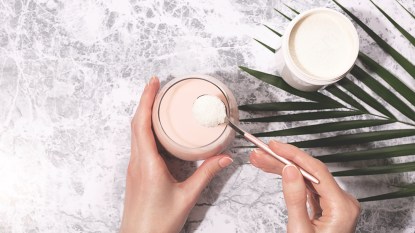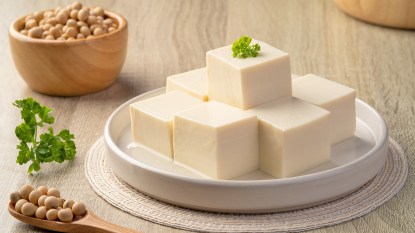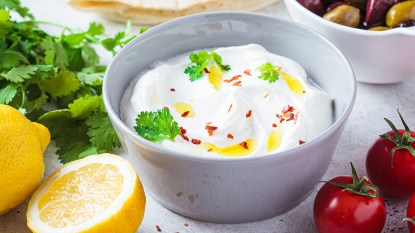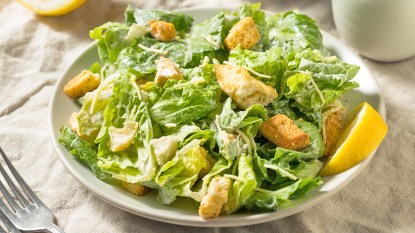Does the Color of Your Egg Yolks Matter for Nutrition? Maybe, and Here’s Why
A darker color isn't always better.
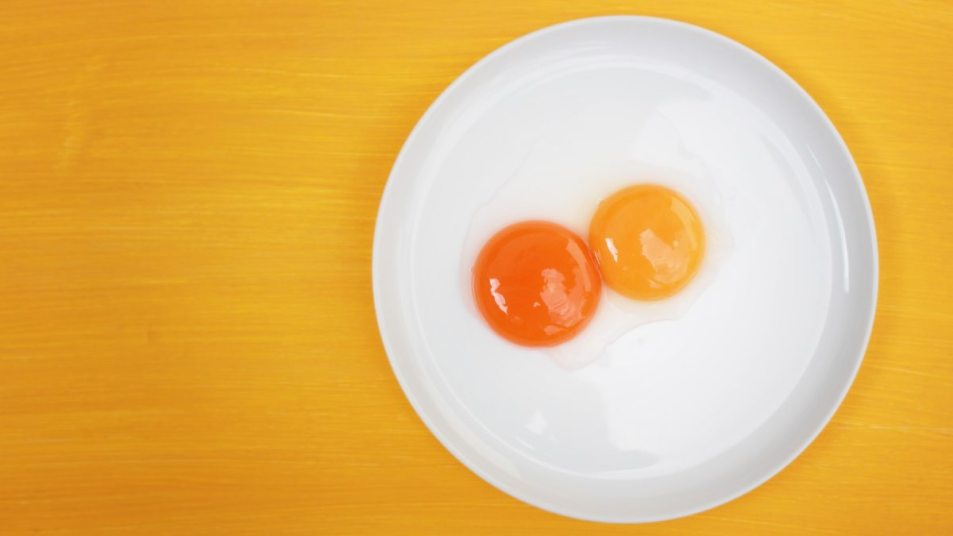
Ever since I was a little girl, I’ve loved visiting the local farm to purchase fresh eggs. To me, they seem better than their store-bought counterparts — the shells are speckled brown and firm, and the yolks have a deep, orange color. But I’ve always wondered if farm eggs are actually more nutritious than grocery store varieties.
Curious, I did a little digging. Here’s the short answer: It’s complicated. I reached out to four nutritionists, and the answers were mixed. The key takeaway is that the amount of macronutrients (carbohydrates, fats, and protein) stays the same no matter the egg. However, the micronutrients (vitamins, minerals, and omega 3s) vary depending on what chickens eat, and that variation can change the yolk color.
A darker yolk isn’t always better.
Chickens are omnivores, and they eat all sorts of bugs and plants when left to their own devices. This is likely why consumers think free-range hens produce better eggs; the idea is that a free-range diet creates nutrient-dense, vibrantly-colored yolks. Yet nutritionists argue that a dark color doesn’t necessarily equal better nutrients.
“Captive chickens fed a diet with carotenoid, a natural coloring agent, can lay eggs with darker yolks,” says Edibel Quintero, RD and Medical Content Author at Health Reporter. Indeed, large companies often feed their hens naturally-dyed food to produce darker egg yolks, because consumers prefer a darker color. “Consumers assume that darker yolks are more nutritious,” says Kendra Gutschow, RDN, LD, and Noom Coach. “Therefore, color enhancements are often added to feed to produce a darker-colored yolk.”
Gutschow notes that colorants “don’t increase the nutritional value.” And major companies agree. Organic Valley, for instance, contends that its chicken feed colorants are neither harmful nor helpful. The company’s color add-ins come from organic sources, like marigold petals.
In addition, some experts say there simply isn’t enough data to prove darker yolks are more nutritious. “Since the chickens’ environment and feed do not significantly affect the egg’s nutritional value, it is impossible to claim that darker yolks are better,” says Quintero. “This would require much more research.”
Naturally dark-colored yolks have more carotenoids.
Still, there’s a case to be made that a hen eating naturally colorful foods will produce eggs with more micronutrients. “The color of the egg yolk does matter,” says Kimberly Gomer, MS, RD, and LDN. “When the yolks are darker and more vibrant, they are generally produced by pasture raised hens whose diets consist of fresh grass, worms, and grasshoppers. This diet is rich in carotenoids which will give the yolks a dark rich color.” Carotenoids, plant pigments with antioxidant properties, are an important part of the human diet.
“Although the macronutrient (overall fat and protein) content stays relatively the same, what hens are fed can impact the micronutrients (vitamins, minerals and carotenoids) of the egg,” adds Gutschow. “Different feed can result in a difference in the overall nutrition profile of the egg. When the hens are fed a diet that includes corn, lucerne hay, and marigold flowers, this results in a darker orange yolk with a higher carotenoid content, which is beneficial for humans.”
This doesn’t mean that natural colorants from plants (like Organic Valley’s marigold coloring) add nutritional value. Color extracted from plants and added to feed might not have the same benefits as a hen eating whole vegetables, seeds, and flowers. Carotenoids and water-soluble vitamins can break down if cooked or processed, leaving the color but not the benefits.
Additionally, there’s a popular myth that dark-colored yolks have more omega-3s — but this is not true. “Only slightly higher omega-3s are found in eggs from free-range chickens, but their yolks are necessarily darker, so it cannot be said that the darker the yolk, the more acids it contains,” says Quintero.
“Darker egg yolks are not an indication that the egg contains more omega-3 fatty acids,” adds Adylia-Rhenee Gutierrez, CN and creator of Build Yhorlife Coaching. “All eggs, no matter what the color of the egg yolk is, contain omega-3s.”
Yolk color is not the best way to estimate quality.
Nutritionists can’t seem to agree on how much yolk color matters. However, what is clear is that you can’t tell the entire nutritional profile of an egg based on color alone. What’s more important is finding out what those hens eat.
For example, Gutierrez points out that hens fed more flaxseed produce eggs with more omega-3s (even though this doesn’t change the yolk color). Gutschow says the same is true for hens fed micro-algae or linseeds.
So, if you are really curious, get to know your local farmers and ask about their chicken feed. Or read the back of those egg cartons to find more information. And if you aren’t that curious, you can rest easy knowing that all eggs still have egg-cellent nutritional benefits.
At the end of the day, you shouldn’t think of eggs as big sources of micronutrients, anyway. Eat your daily quota of fresh fruits, vegetables, and legumes, and you’ll be set.






